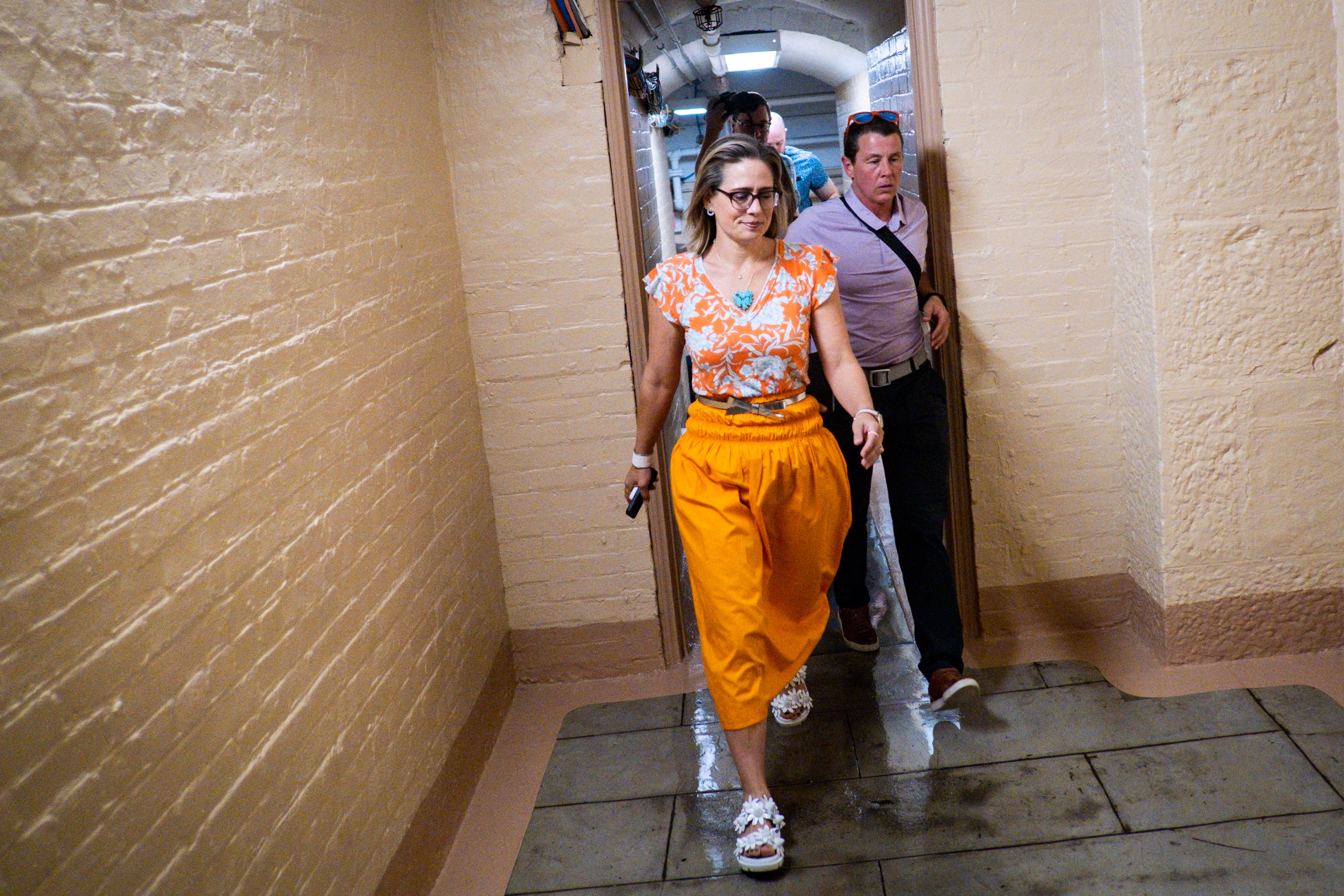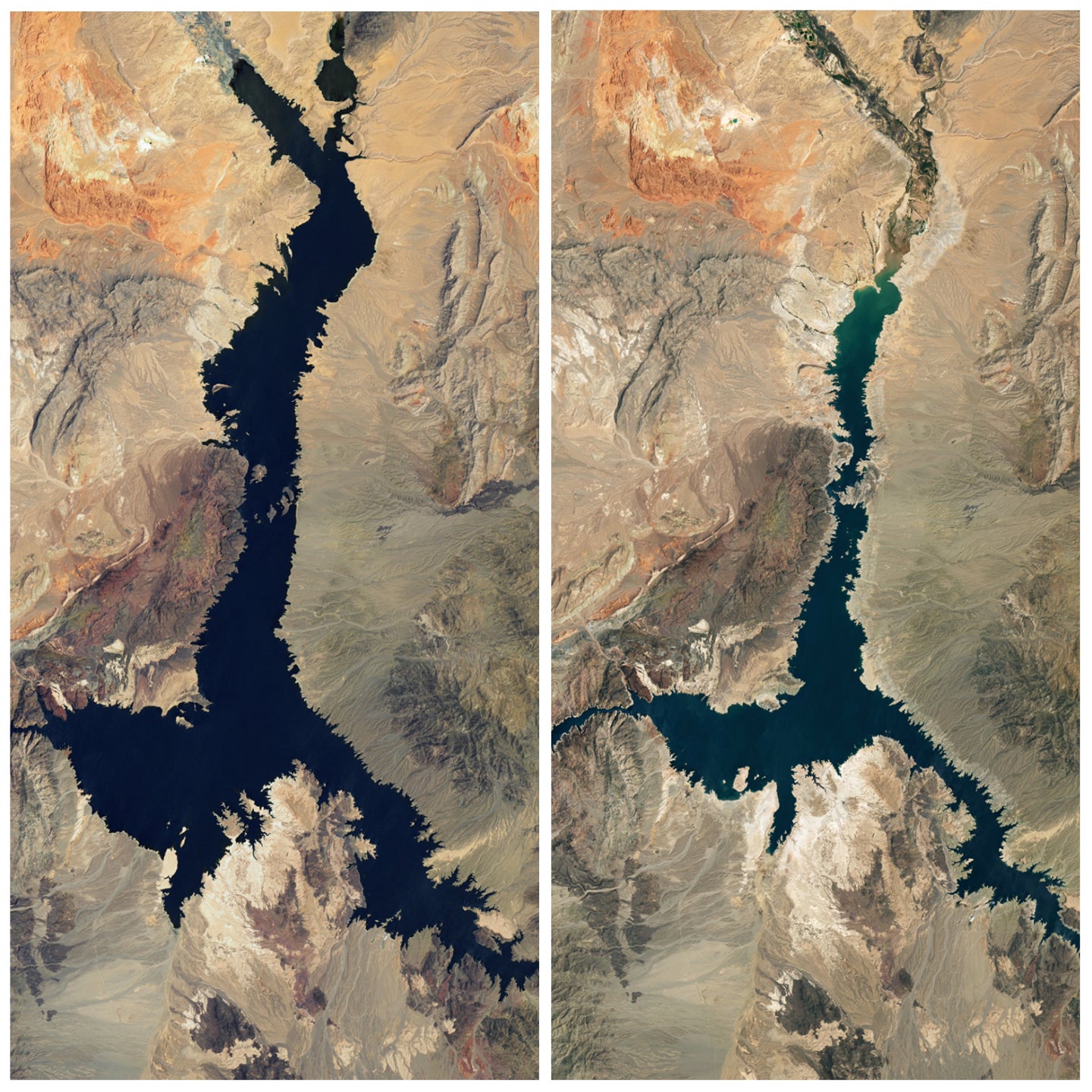Senator Sinema’s support for climate and tax bill depends on ‘billions to tackle droughts’ – here’s why
If the Inflation Reduction Act passes, it will be the most meaningful climate law in US history, and is expected to cut domestic emissions by over 40 per cent
A $430bn climate, tax and healthcare bill is heading for the Senate floor this weekend after Senator Kyrsten Sinema announced on Thursday that she would support the deal.
The Arizona moderate was the final holdout among Democrats, who need all 50 members in the evenly split Senate to pass the bill, via a process called reconciliation, due to zero support from Republicans.
The legislation, known as the Inflation Reduction Act (IRA), intends to cut prescription drug prices and expand heathcare coverage, along with closing tax loopholes used by corporations and the rich.
If it passes, it will also be the most meaningful climate law in US history, and put the country back on track to dramatically cutting domestic emissions.
Recent analyses of the IRA, by independent policy groups, found that it would cut US carbon emissions up to 44 per cent by 2030 (over 2005 levels) – within striking distance of President Joe Biden’s pledge of 50 per cent.
Senator Sinema, a centrist from a state fairly evenly split between Republican and Democratic voters, had a few requests before pledging her support.

Democrats agreed to remove a measure that would have closed the carried interest loophole – which allows partners of hedge funds or venture capital firms to have their income taxed as capital gains, at a lower rate than traditional income.
“We have agreed to remove the carried interest tax provision, protect advanced manufacturing, and boost our clean energy economy in the Senate’s budget reconciliation legislation. Subject to the Parliamentarian’s review, I’ll move forward,” the Arizona lawmaker said in a statement, released by her office on Thursday night.
Senator Sinema has also reportedly asked that more funding – around $5bn – be added to the bill to combat droughts.
No details have been released.The Independent has contacted Senator Sinema’s office for comment.
California Senator Alex Padilla told The Independent on Thursday that he was looking forward to details, and would “welcome the additional resources for drought resilience”.
Senate Majority Leader Chuck Schumer said that a revised version of the bill would be available on Saturday.
Arizona, and other Southwestern states, are in the second-fastest warming region of the US (after Alaska) due to the climate crisis.

Phoenix, Arizona’s largest city, is America’s hottest. The temperature hit 114 degrees Fahrenheit (45.5 degrees Celsius) before summer officially started this year, and heat has killed 38 people in Maricopa County, where Phoenix is located.
The blistering heat is exacerbating the severe drought in the region, and is a factor in wildfire outbreaks. Three large wildfires are currently burning in Arizona, and have destroyed more than 3,000 acres.
The US West is in the grips of a two-decade “megadrought”, the driest period in 1,200 years which research recently discovered would have been impossible without the climate crisis.
All of California, Nevada, Arizona, Utah and New Mexico are in drought conditions ranging from moderate to exceptional, the US Drought Monitor revealed on Thursday. Colorado is also in drought in all but three counties in the north of the state.
The conditions, along with overconsumption of water, have left the US’s largest reservoirs – Lake Mead and Lake Powell – at their lowest levels ever.
Lake Mead, in Nevada and Arizona, was created in the 1930s by the construction of the Hoover Dam on the Colorado River. Lake Powell, in Utah and Arizona, was created in the 1960s when the Glen Canyon Dam was built.
The dams are at risk of “dead pool status”, the United Nations Environment Program (UNEP) warned this week, meaning water could drop so low it won’t flow downstream and power hydroelectric power stations.
Last summer, the US declared the first-ever shortage on the Colorado River which supplies water to 40m people and sustains 4.5m acres of agriculture in the West.
When asked about potential drought resiliency measures on Thursday, Senator Michael Bennet, of Colorado, said: “I know that I cannot vote for a bill unless, if we are going to do something on drought, it improves the condition of the Colorado River.”
He added that he was looking for a “real solution not short-term temporary fixes”.
The IRA legislation will go to a “vote-a-rama” this weekend, that could last for days. Republicans will likely attempt to decimate the bill with constant amendments. Democrats will need all 50 members present - and unified - to protect it.


Join our commenting forum
Join thought-provoking conversations, follow other Independent readers and see their replies
Comments